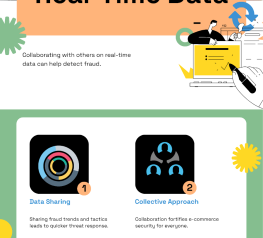Crafting a Meta Product Video for Ecommerce that Actually Converts
Creating a product video for ecommerce has become an essential tool in marketing. They provide a dynamic and engaging way to showcase products, explain features, and demonstrate usage. Studies show that product videos can significantly increase conversion rates and sales.
For instance, viewers are 73% more likely to purchase a product after watching a video about it. In a competitive market, leveraging the power of video content can set your brand apart and drive meaningful engagement with potential customers. See search engine watch survey.
Understand Your Audience when Making an Ecommerce Product Video

Identifying Target Demographics
Understanding your audience is the first step in creating a product video that converts. Identifying your target demographics involves analyzing factors such as age, gender, location, interests, and purchasing behavior. Tools like Google Analytics, social media insights, and customer surveys can provide valuable data about who your customers are and what they care about.
Tailoring Content to Audience Needs and Preferences
Once you have a clear understanding of your audience, tailor your video content to meet their needs and preferences. For example, if your target audience is young professionals, focus on how your product can simplify their busy lives.
Use language, visuals, and scenarios that resonate with their daily experiences and aspirations. This personalized approach helps create a connection with viewers, making them more likely to engage with your content and consider making a purchase.
Create an Airtight Script
A well-crafted script is crucial for keeping your video focused, engaging, and on message. It ensures that all important points are covered concisely and coherently, guiding the viewer through a logical progression from introduction to call-to-action.
Key Elements of an Effective Script
An effective script includes the following elements:
- Hook: Grab the viewer’s attention in the first few seconds.
- Problem Statement: Highlight the problem your product solves.
- Solution: Introduce your product as the solution.
- Features and Benefits: Clearly explain the key features and benefits.
- Social Proof: Include testimonials or reviews to build trust.
- Call-to-Action: Direct the viewer on what to do next, such as visiting your website or making a purchase.
Tips for Writing Engaging and Clear Scripts
- Keep it Simple: Use clear and straightforward language.
- Be Concise: Stick to the main points to keep the video short and engaging.
- Use a Conversational Tone: Make the script sound natural and relatable.
- Read Aloud: Test the script by reading it aloud to ensure it flows smoothly and sounds engaging.
Plan Your Visuals

Importance of High-Quality Visuals
High-quality visuals are essential for making your product look appealing and professional. They help to capture the viewer’s attention and keep them engaged throughout the video.
Investing in good lighting, a high-resolution camera, and professional editing can significantly enhance the overall quality of your video (Murf AI).
Types of Shots to Include
- Close-Ups: Highlight specific features and details of the product.
- Wide Shots: Show the product in use within its environment.
- Dynamic Movements: Use panning and zooming to add interest and focus attention on key aspects.
Use of Animations and Infographics
Incorporating animations and infographics can help explain complex features and data in an easily digestible way.
They add a visual appeal and can make your video more engaging and informative. Use these elements to highlight key benefits, demonstrate how the product works, and provide visual explanations of any technical aspects.
Ensure High-Quality Audio
Clear audio is a critical component of a high-quality product video. Poor audio quality can distract viewers and diminish the overall professionalism of the video.
Clear and crisp audio ensures that your message is conveyed effectively and enhances the viewer’s experience, making them more likely to engage with the content and take the desired action.
Tips for Recording Voiceovers and Background Music
- Use High-Quality Microphones: Invest in a good quality microphone to ensure clear and professional sound. Condenser microphones are a popular choice for recording voiceovers.
- Record in a Quiet Environment: Choose a quiet location to minimize background noise. Using soundproofing materials can further reduce ambient sounds.
- Professional Voice Talent: If possible, hire a professional voice actor to ensure the voiceover is engaging and clear. Their experience can add a level of polish to your video.
- Background Music: Select background music that complements the tone of your video without overpowering the voiceover. Ensure the music is royalty-free or properly licensed for use.
Enhancing Audio Quality
- Audio Editing Software: Use audio editing software to remove any unwanted noise and to balance the levels of different audio tracks.
- Equalization and Compression: Apply EQ and compression to enhance the clarity and consistency of the audio. EQ helps in adjusting the frequency balance, while compression controls the dynamic range.
- Sound Effects: Incorporate sound effects to highlight specific actions or features of the product. This can make the video more engaging and informative.
Focus on the Length and Pace
The ideal length for a product video is between 30 to 60 seconds. This duration is long enough to convey the essential information while keeping the viewer’s attention.
For more detailed explanations or tutorials, videos can extend up to two minutes, but it’s crucial to maintain engagement throughout.
Maintaining a Dynamic and Engaging Pace
- Quick Cuts and Transitions: Use quick cuts and smooth transitions to keep the video dynamic and engaging. This helps in maintaining viewer interest and preventing the video from feeling monotonous.
- Highlight Key Points: Focus on the most important features and benefits of the product, and avoid overloading the video with too much information (Murf AI) (Product Video Studio).
Tips for Pacing and Editing
- Storyboarding: Plan the pacing of your video during the storyboarding stage. This helps in visualizing the flow and making necessary adjustments early on.
- Editing Software: Use professional video editing software to trim unnecessary segments and enhance the visual and audio quality.
- Feedback: Show the draft to a few people and gather feedback on the pacing. Make adjustments based on their input to ensure the video is engaging from start to finish.
Incorporate Customer Testimonials and Social Proof
Social proof, such as customer testimonials, reviews, and endorsements, builds trust and credibility. It shows potential customers that others have had positive experiences with your product, making them more likely to make a purchase (HubSpot Blog).
Types of Social Proof to Include
- Customer Testimonials: Real customers sharing their positive experiences can be very persuasive. These can be in the form of short video clips or written testimonials displayed in the video.
- User-Generated Content: Encourage customers to share their own videos or photos using your product. Feature these in your product video to add authenticity.
- Influencer Endorsements: Collaborate with influencers who can review and recommend your product. Their endorsements can reach a wider audience and add a level of trust and credibility (Product Video Studio) (HubSpot Blog).
Add a Clear Call-to-Action
A strong call-to-action (CTA) directs viewers on what to do next, increasing the chances of conversion. It should be clear, compelling, and aligned with your marketing goals (Shopify).
Examples of Effective CTAs
- “Buy Now”: Encourages immediate purchase.
- “Learn More”: Directs viewers to additional information.
- “Request a Demo”: Invites viewers to try the product.
- “Subscribe”: Encourages viewers to subscribe for updates or more content.
Placement of CTAs in the Product Video and Accompanying Descriptions
- End of the Video: Place the CTA at the end of the video to ensure viewers know what to do next.
- On-Screen Text: Use on-screen text to highlight the CTA visually.
- Video Description: Include the CTA in the video description and provide links to make it easy for viewers to take action. Check out our blog for more ecommerce tips/







